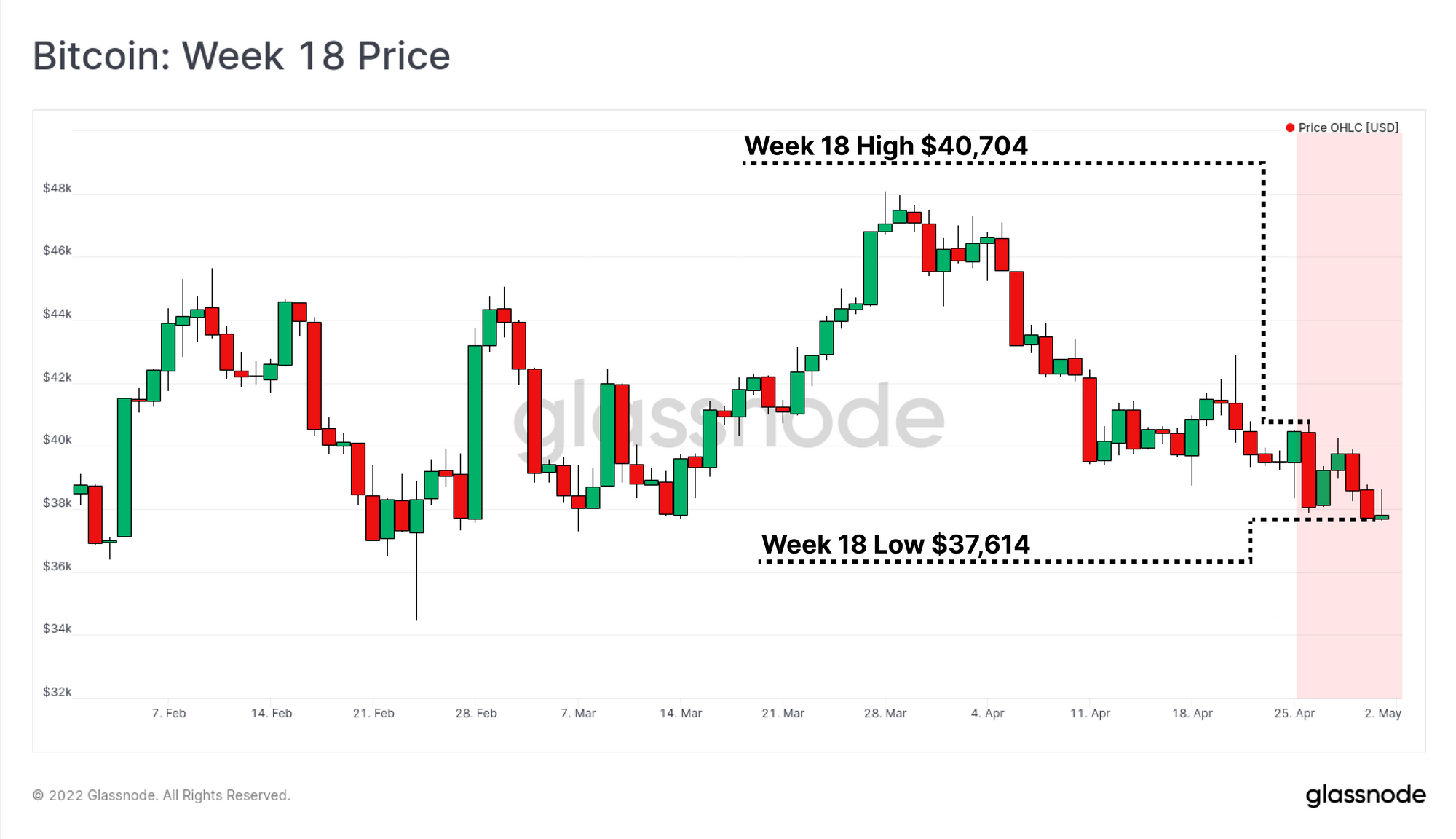Peering Into the Abyss
Bitcoin investors are hanging onto the edge of profitability, with short-term price action threatening to put them back into the red. Meanwhile, a constructive confluence of macro indicators are developing into a clearer picture of a potential bear market floor.

Markets worldwide continue to recoil in the face of inflationary pressures, tightening monetary conditions, and compounding uncertainties and risks. This week saw significant weakness across equities, bonds, and cryptocurrency markets, with Bitcoin trading down to a new monthly low of $37,614.
Despite trading down this week, Bitcoin markets have actually remained surprisingly robust, on a relative basis. Whilst the S&P500 and NASDAQ indexes traded to new local lows of the prevailing bearish trend, Bitcoin prices remain range-bound, and continue to lack any definitive macro momentum in either direction. With that said, correlations between Bitcoin and traditional markets remain near all-time-highs, and a broader perception of Bitcoin as a risk asset remains a significant headwind.
A very large proportion of Bitcoin investors are peering into the abyss of holding unprofitable positions, creating the potential tinder for a much discussed capitulation event. Simultaneously however, numerous long term macro indicators are signalling historical undervaluation levels are in play, reaching values rarely seen outside late stage bear market floors. In this edition, we will explore this notable divergence between the drivers of bearish short-term price action, and the medium-to-long term fundamental trends for Bitcoin.


